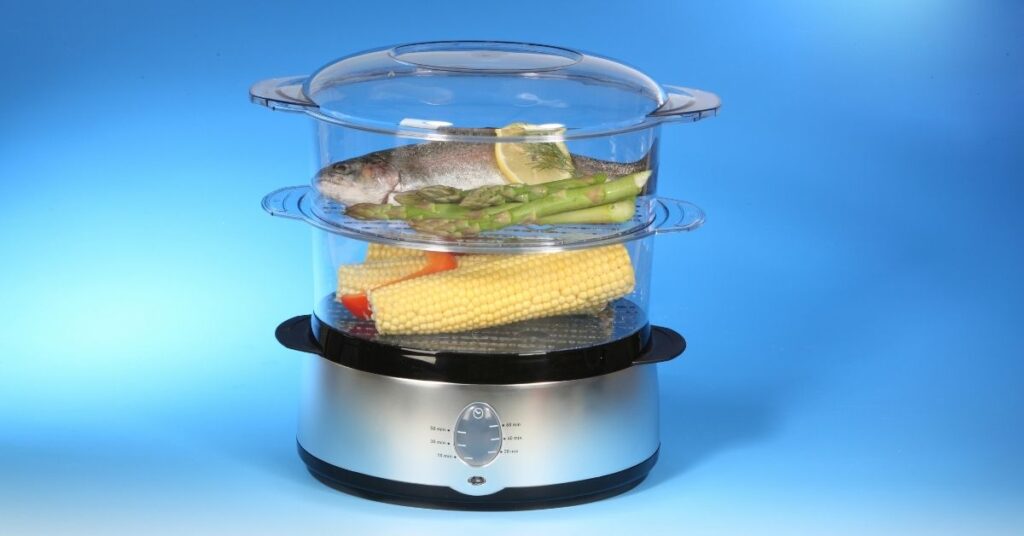No, you don’t have to use distilled water in your steamer, but it’s best for preventing limescale build-up.
Do I Have To Use Distilled Water In My Steamer?
Picture this: You’ve got an important meeting, and your outfit is rumpled like a tossed salad. Your trusty steamer comes to the rescue, but should you fill it with tap, bottled, or distilled water? The answer is, it depends.
Why Water Type Matters
Our everyday tap water isn’t just H2O – it’s packed with minerals like calcium and magnesium. It’s great for drinking, but not so much for your steamer. Over time, those minerals can create buildup inside your steamer’s tank and tubes. This buildup, called limescale, is the enemy! It clogs the works, makes your steamer spit and sputter, and can even shorten its lifespan.
Distilled Water: The Pure Choice
Distilled water is the superstar when it comes to steamers. It goes through a process where the water is boiled, the steam is captured, and then condensed back into liquid. All the impurities and minerals get left behind, leaving you with pure, clean water. This means:
- No limescale worries
- Smoother, more efficient steaming
- Your steamer will have a longer, happier life
Other Water Options
Now, let’s get real – distilled water isn’t always within reach. Here’s the scoop on other options:
- Tap Water: It’s convenient, but it varies wildly in mineral content depending on where you live. If you have “hard water” (meaning lots of minerals), avoid using it straight from the tap. But, if your tap water is relatively soft, it might be just fine in a pinch.
- Bottled Water: Spring water and other bottled options can be better than tap, but they’re not always mineral-free. Read the labels!
- Filtered Water: Basic filters like Brita pitchers remove some things, but not everything. They won’t magically get rid of all the limescale-causing minerals.
Table 1: Water Types for Steaming
| Water Type | Pros | Cons |
| Distilled | No minerals, prevents limescale | Can be more expensive |
| Tap | Convenient | Mineral content varies, can cause buildup |
| Bottled | Varies by brand | Not as pure as distilled |
| Filtered | Reduces some impurities | Doesn’t remove all minerals |
How to Tell if Your Water is Too Hard
You might be wondering, “How hard is my tap water, anyway?” Here are a few signs:
- White, chalky residue around faucets or in your kettle
- Difficulty getting soap to lather
- A sense of “film” on your skin after showering
If you’re seeing these signs, play it safe and opt for distilled water or a mix of distilled and tap to help protect your steamer.
Maintenance is Key
Even if you use the purest distilled water, it’s good practice to maintain your steamer. This means:
- Emptying the tank after every use – don’t let water sit inside!
- Following your steamer’s cleaning instructions – descale when needed
Parting Tips
Here are some more pro tips before we wrap up:
- Read your manual: Your steamer’s instruction booklet is your best friend. It’ll tell you exactly what the manufacturer recommends.
- Look for a budget option: If distilled water seems pricey, check for larger containers – they often cost less per gallon.
Can I Mix Distilled and Tap Water?
Absolutely! If you’re leery about the cost of distilled water, cut it with regular tap water. A 50/50 mix gives you the best of both worlds: reduced mineral buildup with less expense. It’s a win-win.
Special Considerations
Not all steamers were created equal. Here’s what you need to keep in mind:
- Garment Steamers: These upright models tend to be more forgiving with water types. Mixing distilled and tap water is usually A-OK.
- Travel Steamers: These compact cuties are more likely to get clogged due to their smaller size. Sticking with distilled is often the safer bet.
- Steam Irons: Many irons are designed to use regular tap water, BUT always check the manual! Some models have special filters or anti-calc systems.
Table 2: Steamer Types & Their Water Needs
| Steamer Type | Water Recommendations |
| Garment Steamer | Distilled, tap, or a mix |
| Travel Steamer | Distilled is safest |
| Steam Iron | Consult your model’s manual |
The Importance of Cleaning
Even with the best water, deposits can still build up over time. That’s why regular cleaning is non-negotiable. Here’s how to keep things squeaky clean:
- Descaling: Some steamers have a built-in descale function – lucky you! If not, simple vinegar solutions work wonders. Follow your manual’s instructions.
- Filters: Some models have removable filters, designed to trap impurities. Rinse and replace these regularly.
What About Special Additives?
You might see products claiming to add fragrance or other benefits to your steamer water. Unless they’re specifically designed for your steamer’s make and model, steer clear! They can leave residue or even damage the internal workings.
Table 3: Steamer Maintenance
| Task | How Often |
| Empty the Tank | After every use |
| Descale | As recommended in your manual |
| Clean/Replace Filters | According to manufacturer instructions |
Conclusion- Do I Have To Use Distilled Water In My Steamer?
So, do you have to use distilled water in your steamer? Not necessarily. But distilled water does provide the best protection against limescale build-up, ensuring your steamer keeps on steaming for years to come. If you live in an area with hard water, it’s well worth the investment.
